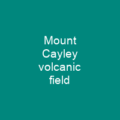Surtsey is a volcanic island in the Vestmannaeyjar archipelago off the southern coast of Iceland. It was formed in a volcanic eruption which began 130 metres below sea level, and reached the surface on 14 November 1963. The eruption lasted until 5 June 1967, when the island reached its maximum size of 2. 7 km2. Since then, wave erosion has caused the island to steadily diminish in size: as of 2012, its surface area was 1. 3 kilometres. It is estimated that Surtsey will remain above sea level for another 100 years.
About Surtsey in brief

By February 1964, the island had a maximum surface of 1.3km2 and was eroded rapidly by North Atlantic storms during the winter. The volcanic eruptions more than kept pace with wave erosion, and by February 1964 the island was a loose pile of volcanic rock, which was eroded by the sea. The current survey shows that by the end of the year the island would have a maximum elevation of 155 metres. It will remain that way for the next 100 years, if it survives the next few decades of wave erosion and other natural processes. The new island was intensively studied by volcanologists during its eruption, and afterwards by botanists and other biologists as life forms gradually colonised the originally barren island. The first noticeable indications of volcanic activity were recorded at the seismic station in Kirkjubæjarklaustur, Iceland from 6 to 8 November, which detected weak tremors emanating from an epicentre approximately west-south-west at a distance of 140 km, the location of Surtseys. The last noticeable indications were recorded on 13 November, when people in the coastal town of Vík 80 km away noticed a smell of hydrogen sulphide. On the same day, a fishing vessel in search of herring, equipped with sensitive thermometers, noted sea temperatures 3. 2 km SW of the eruption center were 2. 4 °C higher than surrounding waters.
You want to know more about Surtsey?
This page is based on the article Surtsey published in Wikipedia (as of Nov. 08, 2020) and was automatically summarized using artificial intelligence.







